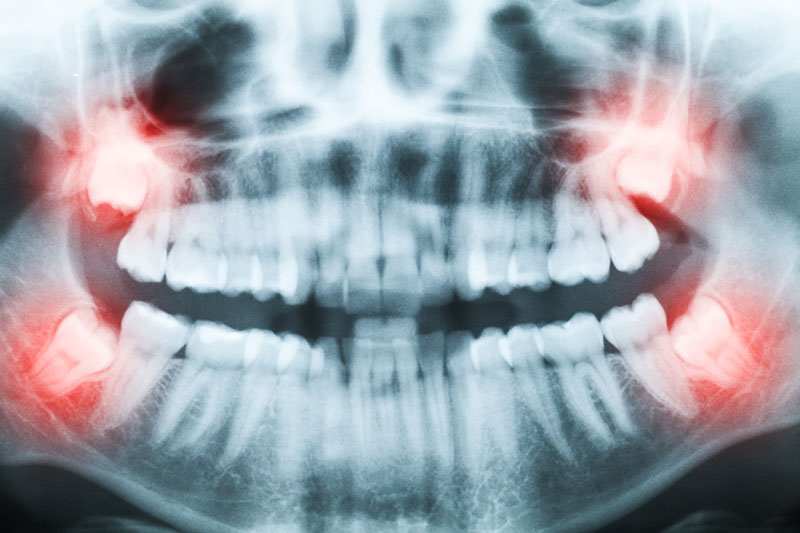
Wisdom Teeth Mississauga: Pain, Symptoms and Treatment
Wisdom teeth are the last part of teething that all people go through in their late teens and early twenties. There are typically two sets of wisdom teeth in one’s mouth, a set on the bottom and a set on the top totaling in four teeth. Teething happen twice in one’s life, once when they are toddlers and they’re getting their children’s teeth and again when they’re getting their wisdom teeth. Everyone is born with their wisdom teeth already in their gums. They are vestigial, meaning our caveman ancestors needed them; specifically, for eating foliage because they couldn’t effectively digest cellulose. During this time, humans had more teeth and larger jaws. After the agricultural revolution, human diets changed, causing our jaws to change and not having enough room for their extra teeth. Having wisdom teeth is a rite of passage into adulthood, as it happens when most are graduating primary school and entering the adult world.
Symptoms & Pain
Not all dental pain is from wisdom teeth. Typically, erupting teeth produces a dull throbbing or feeling of pressure at the back of the jaws. Wisdom teeth break through the gums during the waning moments of puberty, when someone is 17 – 25. During this time, the area around the gums may be inflamed and tender, it also begins red. It’s quite important to recognize if the pain is from wisdom teeth or a different dental issue. If the pain is indeed originating from your wisdom teeth, make an appointment to get them pulled. Most wisdom teeth do not grow in correctly. Some grow in wrong angles, even sideways, and can impact the surrounding teeth. According to the American Dental Association or the ADA, incorrectly grown wisdom teeth can result in the issues such as, infections and cysts.
Pain from an impacted wisdom tooth is hard to ignore. If left in, it can do serious damage like damaging bones and other teeth. There are several signs you can look for if you think your wisdom tooth is impacted. If you have bad breath or a bad taste when you eat food, cysts, jaw pain and tenderness, or swelling of the gums around the tooth, your tooth may be impacted. Go to the dentists to confirm if this pain is from the wisdom teeth and not different issue.
Treatment
The simplest solution for wisdom teeth pain is to have it removed. Recovery time after removal is about three to five days. Slight bleeding and soreness from the extraction area is common and is not a cause for concern. After a fully twenty-four hours the bleeding and soreness should begin to fade. You may experience jaw stiffness as anesthesia wears off as well as difficulty opening and closing your mouth all the way. General pain is also felt near the extraction site for a couple of days and possible in the surrounding area. Typically, your dentists prescribe pain medication. However, the following treatments are home remedies and over the counter alternatives, if you don’t want to use strong pain medication. The following treatments can also be used for people who haven’t had their wisdom teeth extracted.
Sore Mouth Rinse
Put a teaspoon of salt in a cup of warm water. Stir until the salt is fully dissolved. Swirl the concoction in your mouth for 30 to 60 seconds, then spit it out. Do this a few times a day.
Benzocaine
Oral gels such as Colgate Orbase can be applied to the pain area to relive the pain. Follow the instructions given and apply as needed throughout the day.
Ibuprofen
When all else fails, standard over the counter pain killers are the best. This pain reliever is typically inexpensive and can be bought at most drug stores and supermarkets. Use them as needed throughout the day, however, read the packaging for the maximum amount you should take per day.
For some, wisdom teeth eruption is a wonderfully painful experience, while for others, it’s a minor annoyance. The only other time this pain is felt is by toddlers when they teeth for the first time. If you have a child or are generally around teething babies, you now understand their pain.
